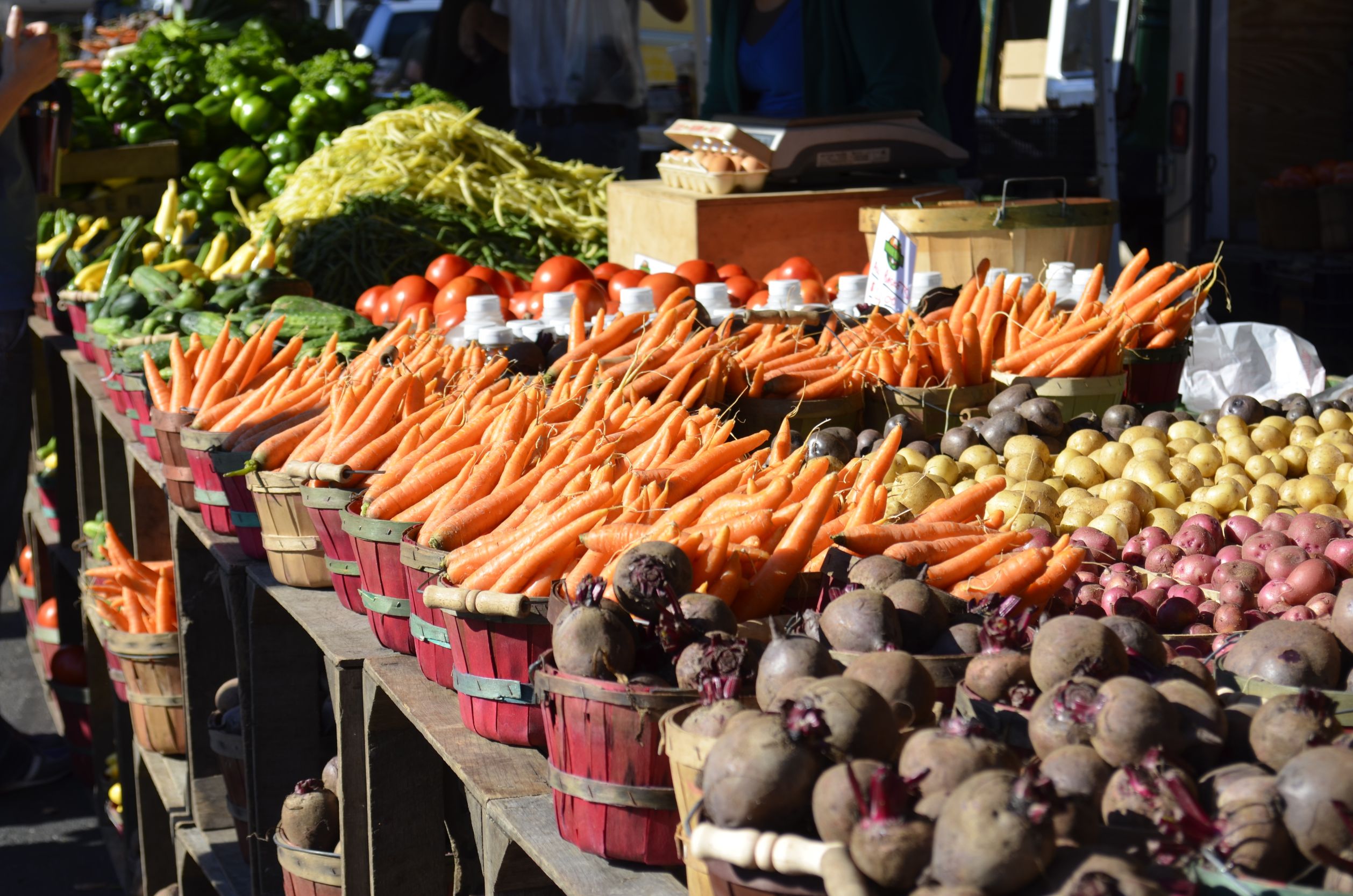Central Michigan Farm and Garden represents a vibrant agricultural landscape, showcasing the region’s diverse produce, sustainable practices, and resilient spirit. From the bounty of local farmers’ markets brimming with seasonal fruits and vegetables to the innovative techniques employed by local growers, this article explores the heart of Central Michigan’s agricultural sector, highlighting its challenges and remarkable successes.
This exploration delves into the unique soil composition and climate conditions that shape agricultural practices, examining the impact of microclimates on crop selection and yield. We will also investigate the key challenges faced by farmers, such as weather patterns and market access, and discuss the innovative solutions and growth opportunities within the sector. Finally, we’ll explore the importance of preserving and processing locally sourced food, emphasizing the benefits for both consumers and the local economy.
Central Michigan Farm and Garden: Local Produce
Central Michigan boasts a diverse agricultural landscape, producing a wide array of fruits and vegetables suited to its climate. The region’s growing season, coupled with the fertile soil, contributes significantly to the quality and variety of locally grown produce. Farmers markets throughout the region offer a vibrant display of this bounty.
Central Michigan’s Fruit and Vegetable Variety
Central Michigan’s fertile land supports the cultivation of various fruits and vegetables. Common fruits include apples, cherries, blueberries, and strawberries, while vegetables such as sweet corn, potatoes, tomatoes, beans, and pumpkins are widely grown. The region’s cooler climate is particularly well-suited to root vegetables like carrots, beets, and potatoes.
Growing Seasons and Crop Selection
Central Michigan experiences a relatively short growing season, typically from late May to early October. This limited timeframe influences crop selection, favoring varieties with shorter maturation periods. Farmers often choose early-season varieties to maximize yield within the available time frame. Late-season crops require careful planning and potentially the use of protective measures like frost covers to extend their harvest.
Popular Local Farmers’ Markets
Numerous farmers’ markets operate throughout Central Michigan, providing direct access to locally grown produce. These markets offer a wide selection of seasonal fruits, vegetables, and other farm products. Popular locations include the Mount Pleasant Farmers Market, the Midland County Farmers Market, and various smaller markets in towns across the region. These markets often feature live music, local artisans, and a strong sense of community.
Nutritional Comparison of Common Crops
| Crop | Vitamin C (mg/100g) | Fiber (g/100g) | Potassium (mg/100g) |
|---|---|---|---|
| Apples | 5 | 2.4 | 107 |
| Sweet Corn | 7 | 2.0 | 291 |
| Potatoes (baked) | 19 | 2.1 | 422 |
Central Michigan Farm and Garden: Gardening Practices
Sustainable gardening practices are increasingly popular in Central Michigan, reflecting a growing awareness of environmental stewardship and the benefits of healthy soil. Pest and disease management strategies focus on integrated pest management (IPM) techniques to minimize reliance on chemical pesticides.
Sustainable Gardening Techniques, Central michigan farm and garden
Common sustainable techniques include composting, crop rotation, companion planting, and the use of organic fertilizers. Composting reduces waste and enriches the soil, while crop rotation helps prevent pest and disease build-up. Companion planting leverages beneficial relationships between different plant species to enhance growth and pest control.
Pest and Disease Management
Integrated pest management (IPM) is a key strategy. This approach involves monitoring pest populations, employing cultural controls (like proper spacing and sanitation), and using biological controls (like beneficial insects) before resorting to chemical pesticides. Regular garden inspection is crucial for early detection and intervention.
Starting a Vegetable Garden: A Step-by-Step Guide
- Choose a sunny location with at least six hours of direct sunlight daily.
- Prepare the soil by amending it with compost or other organic matter.
- Select vegetable varieties suitable for Central Michigan’s climate and growing season.
- Plant seedlings or seeds according to package instructions.
- Water regularly, especially during dry periods.
- Weed regularly to prevent competition for nutrients and water.
- Monitor for pests and diseases and take appropriate action.
- Harvest vegetables at their peak ripeness.
Sample Small Backyard Garden Layout
A small backyard garden can be effectively designed using raised beds or containers. A layout incorporating a mix of short and tall plants can maximize space and sunlight utilization. Consider grouping plants with similar water needs together for efficient irrigation. A visually appealing layout can incorporate a mix of colors and textures.
Central Michigan Farm and Garden: Soil and Climate
Understanding the soil composition and climate conditions is essential for successful farming and gardening in Central Michigan. The region’s climate presents both challenges and opportunities for agricultural production. Variations in microclimates across the region further influence plant growth.
Soil Composition and its Impact
Source: michiganrvandcampgrounds.org
The soil in Central Michigan is generally well-drained and fertile, with variations in composition depending on location. Loamy soils, a mixture of sand, silt, and clay, are common and provide good drainage and aeration. Soil testing is recommended to determine specific nutrient levels and pH, guiding appropriate amendments.
Climate Conditions
Central Michigan experiences a humid continental climate with distinct seasons. Summers are warm and humid, with average temperatures ranging from 65°F to 75°F. Winters are cold and snowy, with average temperatures ranging from 20°F to 30°F. Rainfall is relatively evenly distributed throughout the year. Sunlight hours vary seasonally, impacting plant growth.
Microclimates and Their Effects
Microclimates within Central Michigan, influenced by factors like elevation, proximity to water bodies, and landscape features, can significantly affect plant growth. South-facing slopes, for example, tend to be warmer and drier than north-facing slopes. Understanding these variations allows for strategic crop placement.
Best Planting Times for Various Crops
| Crop | Planting Time |
|---|---|
| Tomatoes | After last frost (late May – early June) |
| Sweet Corn | After last frost (late May – early June) |
| Potatoes | After last frost (late May – early June) |
| Lettuce | Early spring or fall |
Central Michigan Farm and Garden: Agricultural Challenges and Opportunities
Central Michigan’s agricultural sector faces several challenges, including unpredictable weather patterns, pest infestations, and market access limitations. However, opportunities for growth and innovation exist, particularly in areas like sustainable agriculture and value-added products.
Challenges Faced by Farmers
Unpredictable weather, including late frosts, droughts, and heavy rainfall, poses a significant challenge. Pest and disease outbreaks can also impact yields. Access to markets and finding competitive pricing can be difficult for smaller farms.
Opportunities for Growth and Innovation
Growing consumer demand for locally sourced food presents a significant opportunity. Innovation in sustainable farming practices, such as organic farming and precision agriculture, can enhance efficiency and reduce environmental impact. Developing value-added products, such as jams, jellies, and processed foods, can increase farm profitability.
Successful Farming Businesses
Many successful farms in Central Michigan have adopted diversified strategies. Some focus on niche markets, such as organic produce or specialty crops. Others have integrated direct-to-consumer sales through farmers’ markets and Community Supported Agriculture (CSA) programs.
Resources for Farmers and Gardeners
- Michigan State University Extension
- Local agricultural societies and farmer organizations
- The United States Department of Agriculture (USDA)
- Local soil and water conservation districts
Central Michigan Farm and Garden: Preservation and Processing
Preserving homegrown produce extends its availability beyond the growing season. Local businesses play a vital role in processing and distributing Central Michigan’s agricultural products, supporting local economies and food security.
Methods for Preserving Homegrown Produce
Common methods include canning, freezing, and drying. Canning involves preserving food in airtight jars, while freezing maintains freshness through low temperatures. Drying removes moisture, extending shelf life. Each method has specific requirements to ensure safety and quality.
Local Businesses in Processing and Distribution
Several local businesses process and distribute Central Michigan’s agricultural products. These include food processing plants, packing houses, and distribution networks. These businesses play a critical role in connecting farmers to consumers.
Benefits of Using Locally Sourced Food
Locally sourced food reduces transportation costs and emissions, supports local economies, and often offers superior freshness and flavor. Knowing the origin of your food enhances food security and builds stronger community ties.
Recipe Using Locally Grown Ingredients
- Combine diced tomatoes, onions, and bell peppers.
- Sauté the mixture in olive oil until softened.
- Add corn kernels and simmer for 5 minutes.
- Season with salt, pepper, and herbs.
- Serve as a side dish or main course.
Central Michigan Farm and Garden: Visual Representation of a Farm
A typical Central Michigan farm presents a picturesque scene. Rolling hills often dominate the landscape, dotted with fields of vibrant green during the growing season. Farm buildings, often painted in muted tones of red, white, or gray, blend harmoniously with the surrounding environment. The textures vary from the rough bark of old trees to the soft earth of tilled fields.
The atmosphere is one of peaceful rural tranquility, punctuated by the sounds of nature and the occasional farm machinery. In the fall, the landscape transforms into a breathtaking display of autumn colors.
Central Michigan Farm and Garden: Visual Representation of a Garden
A thriving Central Michigan garden is a vibrant tapestry of colors and textures. The layout may be formal or informal, reflecting the gardener’s preferences. A mix of plant heights and colors creates visual interest. The textures vary from the smooth leaves of lettuce to the rough stems of sunflowers. The overall atmosphere is one of abundance and vitality, with the sweet scent of blooming flowers and the promise of fresh produce.
The colors shift throughout the growing season, from the pale greens of spring to the deep reds and yellows of autumn.
Outcome Summary

Source: imgix.net
Central Michigan’s farm and garden community demonstrates remarkable resilience and innovation in the face of agricultural challenges. By embracing sustainable practices, supporting local businesses, and prioritizing the preservation of homegrown produce, the region is fostering a thriving agricultural sector that benefits both the environment and the local economy. The future of Central Michigan’s farms and gardens is bright, promising a continued bounty of fresh, locally sourced food for years to come.



